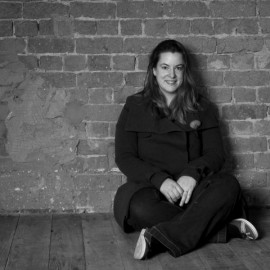Contents include: This month in arts funding news Dany Louise reports on how ACE funding cuts are impacting on small-scale production and artist-centred organisations; and we re-publish Variant’s intelligent commentary on Creative Scotland’s vision; in Reviews Maria Fusco selects texts […]
As part of its Strategies for Survival programme, East Midlands Visual Arts Network is holding a series of roadshow events across the region, presenting an opportunity for new and prospective members to engage in critical discussion, to exchange ideas and information, to meet friends and make contacts, and to find out more about EMVAN and its future programme of activity.
Critical commentary and contextualisation of contemporary art exhibitions across the UK and beyond. Guest selected each month from the wealth of user-generated reviews uploaded to Interface. This month’s guest selector is Maria Fusco. You can read all the reviews in full at www.a-n.co.uk/interface.
Exhibition, residency and bursary opportunities for artists across the UK and beyond.
Lilah Fowler, tube, dimensions variable, aluminium, 2011. Courtesy of the artist and Bold Tendencies.
Motion Disabled is a digital exploration of the bodies of people who are physically different.
Resource
Archive
Feature
by
Variant
As an important part of platforming the debate around arts funding across the UK, with kind permission we re-publish the editorial introduction to “Language is never neutral” from Variant‘s issue 42.
An abridged version of Dany Louise’s follow-up report on small visual arts organisations cut by Arts Council England, six months after her ‘Ladders for development’ enquiry. She asks: how have these organisations fared and what do their futures hold? Read the full version of this report with updates on all surveyed organisations: www.a-n.co.uk/realising_the_value
OpenAIR, the first annual members’forum of AIR: Artists Interaction and Representation, offers a unique platform for artists’ dialogue and debate, empowered and enabled through speakers drawn from very different disciplines and fields of work, all committed to campaigning for effective change.
“These are dangerous times for people and for our world of arts values … Uncertainty can cause us to be safe, edit complexity, be secretive, conservative” says Susan Jones in her provocation ‘Where is the place for art?’
Invited by W.A.G.E to kick-start their partnership with Artists Space – exploring potentialities for artists’ self organisation in New York – artist, economist and sociologist Hans Abbing presented a curious and ultimately frustrating case for … I’m not sure what.
Alan Dunn, James Thompson (Tomo), Robyn Woolston and The Drawing Paper’s Jon Barraclough and Mike Carney have been revealed as the shortlist for the 2012 Liverpool Art Prize when it returns for its fifth successive year.
Who is moving where this month.
Construction Gallery in Tooting opened its doors on 18 January with an ambitious site-responsive work by Alistair McClymont, and works by the project’s first residency artists Sam Robinson and Rebecca Lucraft.
With funding initially awarded in May 2010, the Skills for the Future training scheme from the Heritage Lottery Fund is offering paid training opportunities in museum and heritage settings across the UK.
Whilst public art is distinctly ‘out of favour’ with Arts Council England cutting agencies as part of making savings, it’s interesting to see Creative Scotland taking a rather different tack.
Glass, textiles and paving blocks by artists Susan Kinley and Steven Follen, commissioned by Crawley Borough Council and funded through a Section 106 agreement, were recently installed in the Bewbush area of Crawley, West Sussex as part of the Heart of Bewbush Neighbourhood Improvement Masterplan.
I wish to correct the impression given in Jon Wakeman’s piece about All Points North (‘Debate’, a-n Magazine, December 2011/January 2012) that Axis was responsible for ‘driving’ the project.
I wanted to let you know that this year marks the beginning of a new era for Aspex. We will continue to provide activities and services to artists, but without using the ‘ARC’ brand.
When faced with challenging times and a scarcity of resources, it is understandable that our instinct might be to retract and take fewer risks.
Flora Parrott, Pressure In/Pressure Out (detail), hand-beaten copper and honey, 60x60cm, 2009.
Cara Courage examines the evidence about the gender imbalance in the arts workforce and asks whether it’s really down to women wanting to ‘have it all’.










